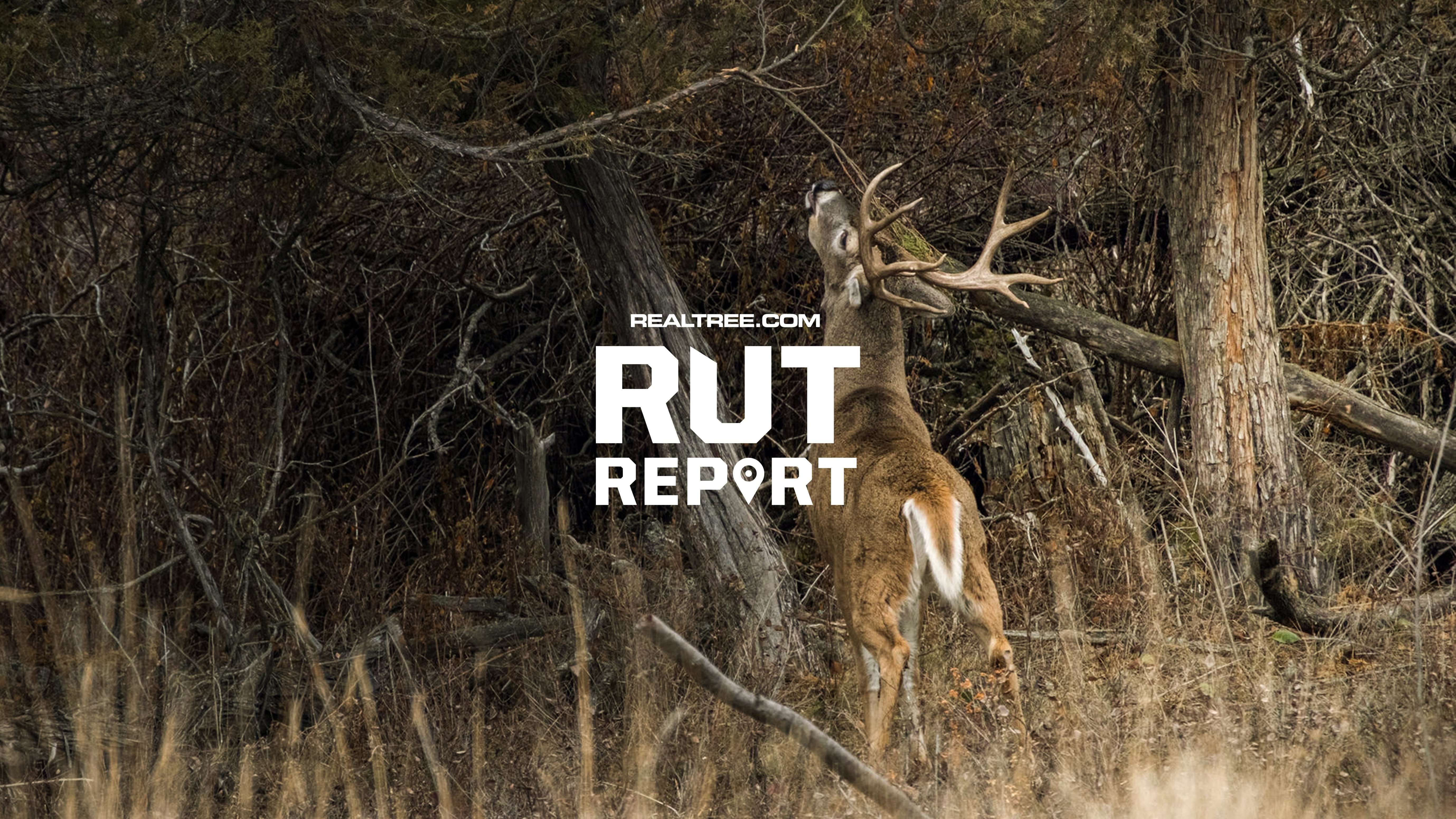The afternoon can be one of your best chances to shoot a longbeard. Here's your playbook for success

Turkeys typically gobble less in the afternoon. When they do, however, they’re more likely to commit to the call. Photo by Russell Graves.
The afternoon doesn't get much attention from hunters or turkeys. Birds hunker low in secluded places to while away the midday. Hunters take siestas to catch up on lost winks, or maybe work in the yard, around the house or at their job. But if your daylight and midmorning sessions didn't work out, there's another good time to invest additional hunting hours: the evening shift.
Provided hunting in the afternoons is legal in your state (in some states, it isn't), real hunting opportunities present themselves in the last two to three hours of daylight. Turkey activity increases significantly at this time.
But the evening shift is a different kind of hunting. A turkey at day's end is not the same bird it was at day's beginning. You must understand those differences, hunt with them in mind, and put a new collection of turkey hunting tactics, techniques and tricks to use. Here's what you need to know about evening turkeys, and how to hunt them successfully.
Don’t Miss: The Ultimate Turkey Gun Patterning Test
HARD-HITTING AFTERNOON TURKEY TIDBITS

You often spot afternoon gobblers along shaded areas and field edges. Setting up at such places is an excellent option. Image by Bill Konway.
Things to know:
Turkeys don't call as much.
Turkeys are more cautious.
Turkeys are headed to roost.
Gobblers will stop to feed.
Don’t Miss: 5 Good Reasons to Try an Over/Under Turkey Gun

Try a lone hen decoy to lure in an afternoon gobbler. Image by Bill Konway.
Tactics to try:
Go light on calling.
Use a blind.
Hunt the food.
Hunt the travel routes.
Keep your distance from the roost.
Cut 'em off.

Afternoon gobblers don't come easy. But sometimes, they're easier than henned-up morning strutters. Image by Bill Konway.
Don’t Miss: The Best Time of Day to Get a Gobbler
THE EVENING TURKEY DIFFERENCE
Turkeys don't call as much: You'll occasionally run across a noisy, gobbling fool in the late afternoon and evening. But more common is the silent, laid-back gobbler that doesn't make a peep until sounding off on his limb for the night. Most studies of gobbling activity show that the evening, though it sees more gobbling than midday, has only 10 to 30 percent of the gobbling a typical morning sees. The toms might be tuckered out after a long day, much of it spent waddling after hens. But there's more.
Turkeys are more cautious: In the morning, turkeys can see what's going on below them as the hens yelp and the toms gobble. If all is clear, they're happy to make a racket, even on the ground for a while. But in the evening, as birds work their way toward a roost area, they don't want to call attention to themselves. Turkeys are as cautious in the evening as they will be all day. And as the wind lays low and sunshine illuminates from the side, any of your sounds and movements are amplified and exaggerated.
Turkeys are headed to roost: An evening gobbler's personality works against the evening turkey hunter. But there are a couple behaviors in your favor. First, turkeys are on the move more than at any other time of day since early morning. In most habitats, turkeys make a circuit out from a roost area, spend the late morning and afternoon hours in loafing cover or other seclusion, then work back toward roost sites as the day wanes.
Gobblers will stop to feed: This is also in your favor: It's an old wive's tale that gobblers don't eat in spring. They might not feed as much or as often as at other times of the year, but they feed nonetheless. And much of that is in the evening, when they can feed quietly alongside their hens. Good forage becomes a gobbler attractant now.

Sometimes during afternoon hunts, especially later in the season, you might encounter a bachelor group of longbeards. Image by Russell Graves.
Check Out Our Latest Camo Pattern: Realtree APX
HUNTING EVENING TURKEYS
To successfully hunt evening gobblers, your tactics and techniques must change with birds' behavior.
Go light on the calling: Turkeys don't make much noise in the evening, so tailor your blind calling to match. Yackety-yack loud and crazy hen cutting is usually out of place. Soft yelps, clucks, and purrs are more the ticket. And much of the time, I don't even bother calling at all. To take a barometer reading on whether to call or not, listen and see if you hear songbirds talking and singing. If you hear some chatter, try a little light calling. But if the woods are silent and any turkeys you may be watching are mute, just set up and wait silently. I call it going whitetail, and it can be the path to a notched tag.
Use a blind: Late afternoon and evening is blind time. Whether you're using a portable pop-up or building a natural hide, the evening turkey's ultra-paranoid approach to life means that the exposed hunter is at a distinct disadvantage. In addition, the wait can be long — maybe two or three hours — because you have to get into position well before the birds are active. Any kind of blind or hide lets you do a little fidgeting, yawning and stretching as you wait so that you're a fine-tuned turkey hunting machine during that last witching hour when everything counts most.
Hunt the food: One prime place to set up for an early evening hunt is a good feeding area, preferably one that's within easy traveling distance of a roosting site. I like hunting feeding areas now because turkeys can be less paranoid here, where they're farther back from their roost. It also gives you a better opportunity to see birds while there's still plenty of legal shooting light remaining. Gobblers will feed in the evening, and they will put breeding as secondary on their agenda.
Hunt travel routes: Try to avoid hunting turkeys too close to their roost site. That can really put birds off their patterns and run them off the property you're hunting, or right out of the area. A more productive spot is a travel route or natural funnel between staging or feeding areas and the roost site. Turkeys are more likely to pass here while the sun is still up and legal shooting light is available. But remember: Every step a bird takes toward the roost produces an even jumpier turkey.
Keep your distance from the roost: If you insist on hunting right at a roost site, maybe on the last evening of a hunt, here's advice: Turkeys seldom launch themselves from straight below a roost tree. Rather, they gather and will jump from a hillside, field or open glade, or conduct a take-off and flap their way across 20, 50 or 100 yards of open space to get into a tree. In timber, they'll launch from outside the tree's spread of branches, sometimes from across a gully or draw. In West Texas, I once located a great roost site of live oaks, and sat below them for an evening hunt. At sundown I had 50 turkeys in the branches above me; the birds had taken off from a clearing 30 yards in front of the copse of trees! That's where I should have been: on the edge.
Cut 'em off: Although waiting out evening turkeys at a prime feeding spot or on a scouted-out travel route is most effective, there are situations when spotting and then maneuvering ahead of traveling birds is smart. This usually works best in open country, often in the West or the prairie states. Get to a good vantage point a couple hours before dark, glass for birds and watch a drove that has a gobbler or two. Better yet, try to pick out a small group of birds, lone gobbler or just a pair. Study the birds' travel route, then use terrain to sneak ahead of them and set up an ambush. It's an exciting, invigorating change of pace from sitting and waiting.
There is no one right answer on how to hunt evening turkeys. The only trick, if there is one, is to recognize and realize that an evening gobbler has a very different personality than he did in the morning. Put that idea to work, and you could have yourself a very productive evening shift in the turkey woods this spring.












